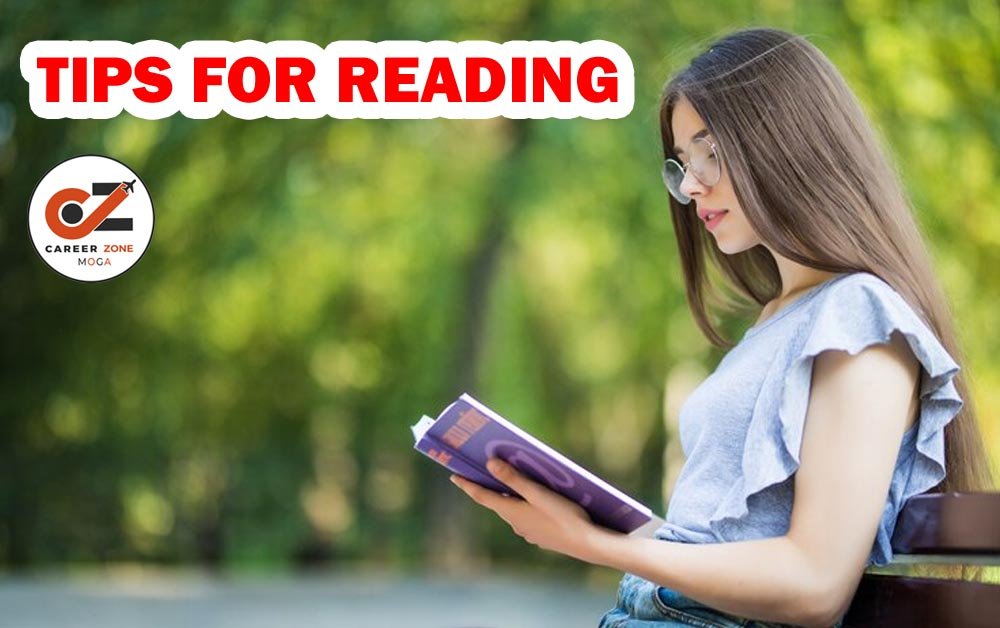
TIPS FOR READING
Read Academic Texts
Read in your free time! The IELTS texts are “general academic texts”. This means they are taken from sources such as textbooks and specialist magazines and journals. If you are not familiar with reading these kinds of texts in English it is essential that you start reading them in your free time so that you are used to the types of language and structure used when you meet them in the exam. Three typical sources for IELTS texts are (in order of difficulty – easiest first) the National Geographic, the New Scientist and the Economist. You can get these magazines in most newsagents.
Focus
Focus on the text first, the questions second! A good understanding of the text helps you answer the questions more efficiently and effectively.
TIPS FOR READING
Categorise
IELTS exam writers select a range of specific types of texts. Learning to recognise the type of text you are reading can help you predict its structure and therefore understand it more quickly. There are four types of IELTS texts a) analytic texts, which discuss the reasons why something happened or make recommendations or explain a concept b) descriptive texts, which describe a situation, explain how something is done or categorise something c) discursive texts, in which different opinions are expressed about an issue and d) narrative texts, which explain a chronological sequence of events.
Skim
Develop your ability to skim. Skimming is reading quickly by skipping over unimportant words like prepositions and ignoring difficult words that you don’t need to understand. Do this to get a general idea about a text or a paragraph or to intensively search for the answer to a question.
TIPS FOR READING
Scan
Learn to scan. Scanning is what you do when you look for a price in an advertising text or a name in a telephone book. When you scan you do not actually need to read the text but move your eyes quickly over it. You can scan from left to right or right to left, from top to bottom or bottom to top. Do this to find the location of answers in the texts looking out for easy to spot words like numbers, dates and words beginning with capital letters such as place names.
Structure
Learn to recognise paragraph structure. This often involves spotting the relationship between the main ideas and supporting ideas in a paragraph. Paragraphs are most frequently descending, i.e. they begin with the main idea somewhere near the start and develop from there, although some, frequently the first and last paragraphs of a text, are ascending – the main idea is located towards the end. This can be particularly helpful when matching headings to paragraphs.
TIPS FOR READING
Overview
Get an overview of a text before dealing with the questions. Do this by reading the title and subtitle as well as focusing on the beginnings and ends (but not JUST the first and last sentences) of paragraphs. This helps you process the information in a text (and thereby answer the questions) more quickly.
Parallel Phrases
Learn to spot parallel phrases. These are different ways of expressing the same thing, such as, “I like to ski” and “skiing is enjoyable”. Many questions, e.g. YES NO NOT GIVEN questions and gap fills, test your ability to match up a similar phrase in the task with its equivalent in the text.
TIPS FOR READING
Don’t Panic
Don’t panic when you encounter an unknown or difficult word. IELTS texts are packed with highly specialised vocabulary. Skip over difficult words which are not essential for your understanding of the text. For words you do need to understand, practise trying to guess their meaning using the overall context of the text and sentence as well as the form of the word – e.g. is it a noun or verb.
Manage Your Time
Time manage in the exam. Most IELTS candidates run out of time in the third reading section. Each text should take you roughly 20 minutes (the examiners will tell you after 20 minutes have passed). Never spend too long on a single question – guess the answer or leave it to return to later.
Also if you feel you are running out of time, tackle questions like gap-fills before doing “easy to guess” tasks like YES NO NOT GIVEN questions. Don’t forget you also have to have all your answers on your mark sheet by the end of the test. A good tip is to write them on the mark sheet in pencil as you go, correcting where necessary at the end.
TIPS FOR READING

TIPS FOR READING
TIPS FOR READING